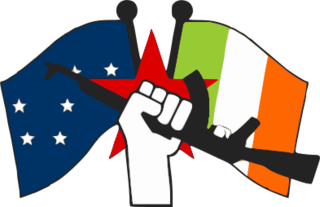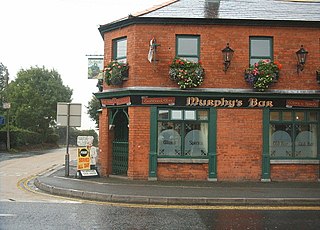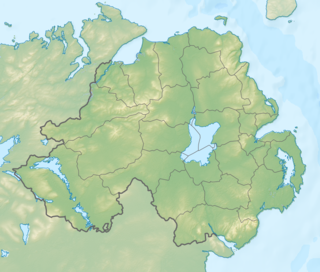This article is being considered for deletion in accordance with Wikipedia's deletion policy. |
This article has multiple issues. Please help improve it or discuss these issues on the talk page . (Learn how and when to remove these template messages) (Learn how and when to remove this template message)
|
This article's tone or style may not reflect the encyclopedic tone used on Wikipedia.(February 2019) (Learn how and when to remove this template message) |
| Springhill Avenue shooting 1987 / Part of INLA/IPLO feud | |||||||
|---|---|---|---|---|---|---|---|
| Part of the Troublesđ | |||||||
| |||||||
| Belligerents | |||||||
| Commanders and leaders | |||||||
| Strength | |||||||
| 2 IPLO volunteers | 3-4 INLA gunmen | ||||||
| Casualties and losses | |||||||
| 2 killed | 0 | ||||||
The back story to the Irish National Liberation Army (INLA) / Irish People's Liberation Organization (IPLO) feud is complicated and stems from the Supergrass Trials of the early 1980s in which high ranking INLA man Harry Kirkpatrick who sentenced dozens of people away to prison on Kirkpatrick's word alone. One of those sent to prison because of Kirkptarick was Gerard Steenson, the INLA Belfast Brigade's leader & potential for next in line to be the leader of the organization.[ citation needed ] Around this same time 1983 - 1984 the INLA started suffering on the military front, not able to put the plans & operations together from 1978 - 1983 period that hard turned them into a respectable & feared urban gurrilla/terrorist organization.[ citation needed ] People left the INLA like Gerard Steenson and Jimmy Brown and others were expelled for their views on how the group should be run. The IPLO's new manifestio was to destroy the INLA & IRSP leadership as they believed that group was no longer dedicated to revolutionary socialism and make the IPLO & their small political group the Republican Socialist Collective as the main Irish Republican Socialist Movement (IRSM) in Ireland.[ citation needed ] On the 21 December 1987 the IPLO strcuk first blood, killing Tomas McCartan (31). [1] Although moderates on both sides wanted to resolve the problem incase it turned out like the mid 70's with Provo's and Sticks, or the mid - late 70's INLA vs Sticks. On the 20 January 1987 it looked like senior members were going to put a stop to the internal Republican feud. At the Rosnaree Hotel shooting there was a senior delegate from both the IPLO & INLA, but little went according to plan at least for the INLA, and the IPLO volunteers opened fire & INLA delegates which included Hugh Torney was badly injured aand other INLA Volunteers, Thomas "Ta" Power was killed outright along with INLA volunteer John O'Reilly.[ citation needed ]

The Irish National Liberation Army is an Irish republican socialist paramilitary group formed on 10 December 1974, during "the Troubles". It seeks to remove Northern Ireland from the United Kingdom and create a socialist republic encompassing all of Ireland. It is the paramilitary wing of the Irish Republican Socialist Party (IRSP).

Supergrass were an English rock band formed in Oxford in 1993. The band consisted of brothers Gaz and Rob Coombes, Mick Quinn and Danny Goffey.
Henry Kirkpatrick is a former Irish National Liberation Army member turned informer against other members of the INLA.
Contents
Up until March the feud had been mostly one way traffic with most killings being carried out by IPLO men against INLA Volunteers, but on the 7 March the INLA killed IPLO man Thomas Maguire near the village Meigh in County Armagh. [2] A week later and a day before the shooting in Ballymurphy the INLA shot dead IPLO man Fergus Conlon near Forkhill in Armagh. It's believed Conlon had been interogatted by Dessie "the border fox" O'Hare before he was killed. [3]

Meigh is a small village and townland near Slieve Gullion in County Armagh, Northern Ireland. It had a population of 444 people in the 2001 Census. It lies within the Newry and Mourne District Council area.

County Armagh is one of the traditional counties of Ireland and one of six counties that form Northern Ireland. Adjoined to the southern shore of Lough Neagh, the county covers an area of 1,326 km² and has a population of about 174,792. County Armagh is known as the "Orchard County" because of its many apple orchards. The county is part of the historic province of Ulster.

Forkhill or Forkill is a small village and civil parish in south County Armagh, Northern Ireland. It is within the Ring of Gullion and in the 2011 Census it had a recorded population of 498. It lies within the former barony of Orior Upper.





